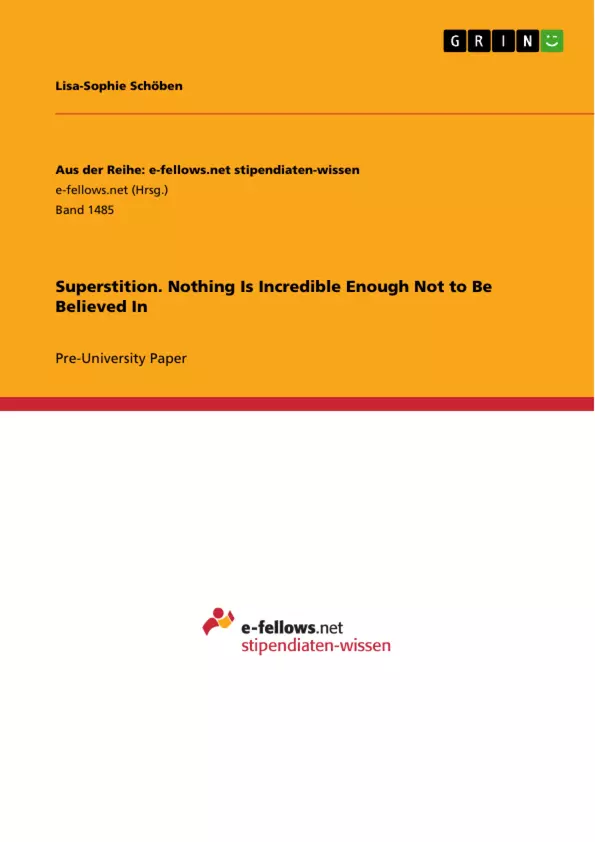It is really true that superstition has already had a long tradition.
Its roots can be traced back into Ancient Greece; it played an important role in antiquity and had its peak in the Middle Ages which is especially known for the witchcraft trials. Many tragedies, dramas, and poems from that period of time dealing with superstition are still popular today.
By definition “superstition is a widely held but irrational belief in supernatural influences, especially as leading to good or bad luck, or a practice based on such a belief.”
It attributes powers to persons and things which are not nature-given.
Is superstition a current matter nowadays? Which elements are still present today and how far is it spread? Is there room for anything so old-fashioned, credulous, and primitive in our modern, rational time determined by reason, intellect, and sanity? Or is it just an unimportant “fashion” which recurs every now and then and is only smiled at by the majority?
Does superstition have any significance other than entertaining us? What do superstitious rites include and what traditions are still exerted today?
Inhaltsverzeichnis (Table of Contents)
- Introduction
- Superstition
- What Is "Superstition"?
- The Origin of Superstition
- Superstitious Practices
- Symbols of Good & Bad Luck
- Lucky Charms
- Astrology
- Dreams & Oneiromancy
- Magic
- Supernatural Creatures
- The Devil
- Vampires & Werewolves
- Witches
- Superstition & Religion
- Superstition In Shakespeare's "Macbeth"
- Modern Superstition
- Superstition In The 20th Century
- Superstition In Modern Literature Using The Example of “The Vampire Diaries”
Zielsetzung und Themenschwerpunkte (Objectives and Key Themes)
This text aims to explore the concept of superstition, its origins, practices, and continued presence in modern society. It analyzes the historical development of superstition, examining its role in ancient Greece, the Middle Ages, and its persistence into the 20th and 21st centuries. The text also delves into the psychological roots of superstition, exploring the factors that contribute to its prevalence.
- The definition and nature of superstition
- The historical development of superstition, from antiquity to the modern era
- The psychological roots of superstitious beliefs and practices
- The role of superstition in literature and popular culture
- The continued relevance of superstition in contemporary society
Zusammenfassung der Kapitel (Chapter Summaries)
The introduction provides a definition of superstition and explores its historical significance, highlighting its presence in ancient Greece and the Middle Ages. Chapter 2 delves into the definition of superstition, exploring its origins and various practices, including symbols of good and bad luck, lucky charms, astrology, dreams, magic, and supernatural creatures like the devil, vampires, and witches. The chapter also examines the relationship between superstition and religion.
Chapter 3 focuses on the role of superstition in Shakespeare’s “Macbeth,” exploring its influence on the play’s themes and characters. Chapter 4 explores modern superstition, examining its presence in the 20th century and its portrayal in contemporary literature, using the example of “The Vampire Diaries.”
Schlüsselwörter (Keywords)
Key terms and concepts explored in this text include superstition, belief, supernatural, magic, religion, witchcraft, folklore, psychology, literature, popular culture, and contemporary society.
- Arbeit zitieren
- Lisa-Sophie Schöben (Autor:in), 2012, Superstition. Nothing Is Incredible Enough Not to Be Believed In, München, GRIN Verlag, https://www.hausarbeiten.de/document/300986


